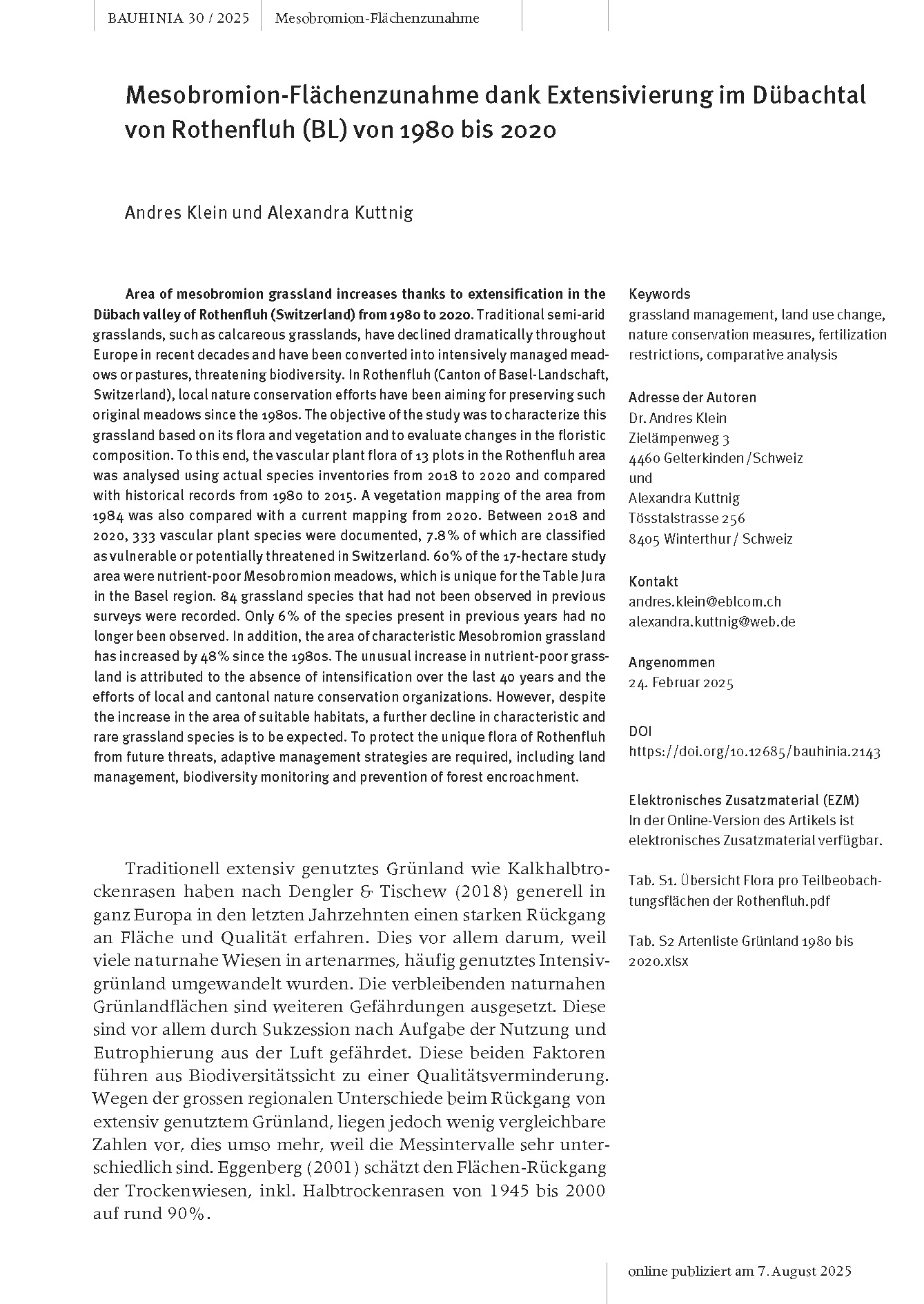Abstract
Traditional semi-arid grasslands, such as calcareous grasslands, have declined dramatically throughout Europe in recent decades and have been converted into intensively managed meadows or pastures, threatening biodiversity. In Rothenfluh (Canton of Basel-Landschaft, Switzerland), local nature conservation efforts have been aiming for preserving such original meadows since the 1980s. The objective of the study was to characterize this grassland based on its flora and vegetation and to evaluate changes in the floristic composition. To this end, the vascular plant flora of 13 plots in the Rothenfluh area was analysed using actual species inventories from 2018 to 2020 and compared with historical records from 1980 to 2015. A vegetation mapping of the area from 1984 was also compared with a current mapping from 2020. Between 2018 and 2020, 333 vascular plant species were documented, 7.8 % of which are classified as vulnerable or potentially threatened in Switzerland. 60 % of the 17-hectare study area were nutrient-poor Mesobromion meadows, which is unique for the Table Jura in the Basel region. 84 grassland species that had not been observed in previous surveys were recorded. Only 6 % of the species present in previous years had no longer been observed. In addition, the area of characteristic Mesobromion grassland has increased by 48 % since the 1980s. The unusual increase in nutrient-poor grassland is attributed to the absence of intensification over the last 40 years and the efforts of local and cantonal nature conservation organizations. However, despite the increase in the area of suitable habitats, a further decline in characteristic and rare grassland species is to be expected. To protect the unique flora of Rothenfluh from future threats, adaptive management strategies are required, including land management, biodiversity monitoring and prevention of forest encroachment.

Dieses Werk steht unter der Lizenz Creative Commons Namensnennung 4.0 International.
Copyright (c) 2025 Dr. Andres Klein, Alexandra Kuttnig

